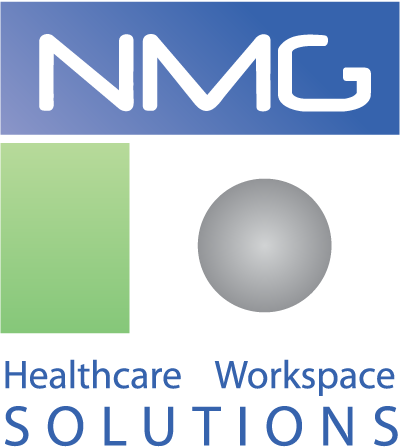Diabetes in the Arab World
In 2017, it was estimated that 39 million people in the Middle East and North Africa (MENA) had diabetes. According to the International Diabetes Federation, this number is projected to surge by 110 per cent to 82 million by 2045. The increase in diabetes has been attributed to rising obesity, unhealthy diet, rapid urbanisation and lack of exercise – factors that largely lie outside the realm of healthcare.
Of course, this is not breaking news. Doctors have long been aware that access to hospital care is considered one of the smallest determinants of human health. Other factors such as economics, physical environment, behaviour and genetics all play an arguably larger role.
Designing homes, offices and schools to support human health and well-being is frequently discussed in both academic and industry literature. But what about ‘third places’ such as retail establishments? The scale and prevalence of retail centres in the MENA region make them ideal spaces to promote health and wellness.
How can these retail centres be key, unexpected allies in helping the public lead a healthier lifestyle?
The Potential of Retail
Designing wellness-focused retail spaces could be a particularly strategic opportunity to offer preventative health solutions. In general, the MENA region’s hot, arid climate has largely made enclosed malls a preferred retail solution. Shopping centres are omnipresent and operating 24/7 in some regions. They are the centres of neighbourhoods, communities and cities; and serve as bustling hubs for shopping, social gatherings, entertainment and information.
In the last few years, the retail market has expanded to include more civic, culinary, educational and cultural elements to offer experiences beyond shopping. A growing number of enclosed retail centres are connected to multiple modes of transportation and offer security, cleanliness, community connection, improved air quality and a comfortable temperature. Amenities that can be offered to support social connection (e.g., tables and chairs, free concerts, etc.) and cleaner indoor air (e.g., air filtration) are particularly important. Recent research shows correlation between social isolation and Type 2 Diabetes and PM2.5 air pollution and risk of Type 2 Diabetes.
Some institutions and entities are already paying attention to this potential preventative health solution. For example, the U.S. Centers for Disease Control (CDC), together with Health Promotion Research Center at the University of Washington School of Public Health, published “Mall Walking – A Program Resource Guide” in 2015. This guide outlines the benefits of mall walking and design suggestions that ‘nudge’ physical activity.

Project name: Huafa New Town Phase Six in Zhuhai, China Huafa New Town Phase Six in Zhuhai, China by HOK integrates colourful skylight, outdoor greenery and waterfront view into a continuous internal retail street that is ideal for shopper – walker. Credit: Hannah Chu
Elements of Wellness Retail
Most major cities in the MENA region have large shopping malls, like The Avenues in Kuwait City, and the Dubai Mall in Dubai. These malls offer kilometres of walking area with weather protection, security and amenities. A daily dosage of widely recommended 8,000 to 10,000 steps can be easily exceeded by walking each floor of the Dubai Mall.
If interested, designers and developers can take several actions that may enhance the health and wellness potential of these modern retail facilities. These might include:
- Using environmental graphics and signage to encourage walking
- Offering healthy dining options in food courts
- Creating open spaces for exercise
- Incorporating biophilic elements (like interior green spaces and living walls) into building design
- Launching apps to help people navigate healthy features of space
- Increasing daylighting and views to the outdoors
Traditional patterns of design that have been proven successful should also be acknowledged and incorporated into more modern facilities. The “souk” (or traditional Arab retail street market), for example, offers local food options and space to walk and connect to the community. Coupling these design elements with modern solutions (like mobile apps) will likely be key in promoting increased physical activity.
Wellness retail could benefit a wide range of ages and demographics —particularly ‘vulnerable populations’ such as children and the elderly. Families with children might feel safer in an enclosed environment away from cars and other potentially dangerous activities on the street. Older individuals will likely be more comfortable with temperature-controlled spaces that have easy access to amenities like benches, air filtration, drinking fountains, restrooms and spaces for social connection.
Evolution of the Mall
The rapid rise of diabetes in the MENA region is an urgent health issue that needs to be addressed from multiple angles and across industries. Hospital campuses will not be able to address an issue of this magnitude in a silo. Healthy, preventative behaviours like physical activity and healthy diet will need to be integrated into daily life. Wellness retail is one way to provide environments that support and encourage this.
Along with the growth of the experience economy, health and wellness are trendy topics especially among millennials. Wellness benefits are the ideal perk for health-conscious shoppers as they bring their foot traffic to stores and businesses. The emphasis on retail venues as centres for health and wellness can have a significant reciprocal effect for the stores. By reframing the existing space as a free exercise opportunity, for example, retail centres may bring more foot traffic to all stores, restaurants, entertainments venues and other attractions – reaping the benefits of spontaneous shopping experiences.
In this way, building retail centres that support a key societal value – health and well-being – can be a win-win-win for hospitals, businesses, and consumers alike making us rethink health beyond the hospital.









